Fire is a burning process that occurs outside a special focus and can cause material damage, and also represents a danger to human life and health. The classification of fires distinguishes open, closed, massive, solid, heavy. There are a large number of types of fires, depending on various causes and external factors.
Why is there a fire?
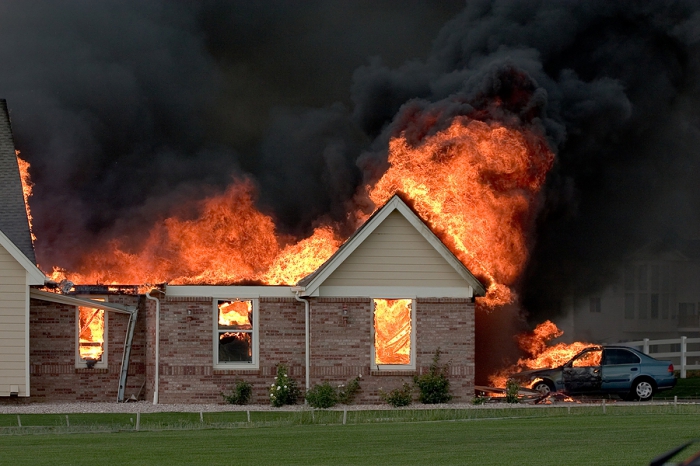
Any fire occurs as a result of certain reasons that are taken into account when assigning it a certain type and class. The most common causes of fires are as follows:
- Arson.
- Defective production equipment and violation of production process technology.
- Violation of the rules for the operation of this or that equipment.
- Improper operation of furnaces, heat generating units, installations.
- Careless handling of fire.
- Improper operation of vehicle mechanisms.
- Improper use of gas, kerosene, gasoline-powered household appliances.
- Explosions, lightning discharges.
Very often, the causes of fires lie in childish pranks and inept handling of fire, as a result of which every 6-8 fire appears precisely because of this. In everyday life, the most common causes of such situations are faulty wiring, improper operation of the electrical network, and short circuits. The lion's share of fires occurs as a result of an elementary neglect of the rules for operating household appliances and equipment.
In country houses and in general in rural areas, fires often occur as a result of the operation of faulty stoves, chimneys, when, under the influence of a flame, combustible gases and sparks fall through cracks in the masonry through the cracks in the masonry. The consequences of fires can lead to death of all those who at the time of the fire were in the room or near a flame source.
City situations
City fires are dangerous because they usually occur in buildings with a lot of people. And most often, such fires occur due to carelessness. Unplugged household appliances, smoking in unspecified places, faulty electrical appliances, and even decorating Christmas trees with flammable materials can cause a fire. A fire in a city occurs most often precisely for these reasons.
A, B, C, D - combustion of various substances
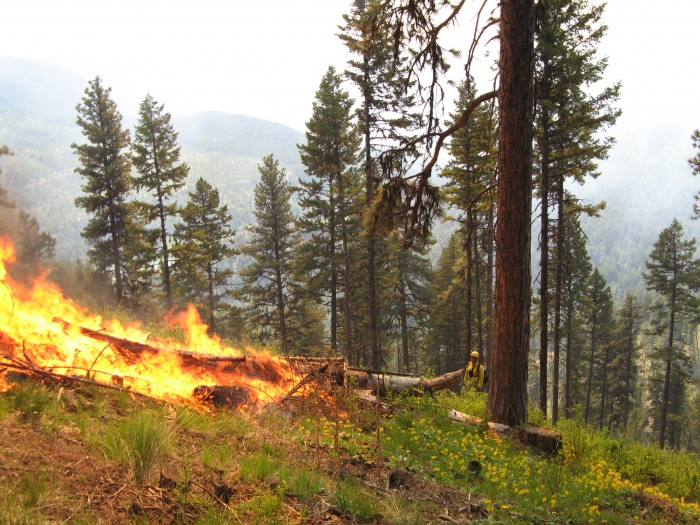
Depending on which substance is burning, a fire class is established. Class A includes the combustion of solids, class B is assigned to a fire when burning flammable flammable liquids, C is the combustion of gases, D is the combustion of metals. The classification and characterization of fires depends on several factors:
- The quantity and quality of combustible materials.
- Area of fire.
- Burning time.
- The consequences.
Depending on these parameters, each fire is assigned a specific score on a five-point scale. Moreover, the entire space on which the fire occurred is divided into a combustion zone, a heat affected zone and a smoke zone. In the first zone are directly materials that burn. The thermal effect affects the state of substances and materials, which later also ignite, and the smoke zone is the space adjacent to the combustion zone, where smoke accumulates, thermal decomposition products appear.
The consequences of fires during the burning of various types of substances are very dangerous, because in addition to open fire, thermal radiation appears, the oxygen concentration becomes lower, sparks and toxic combustion products are dangerous.
How to behave in case of fire?

If a fire occurs, you need to know and strictly follow the fire safety rules. The second important rule is to know where the fire extinguishing means are and to be able to use them. The third rule is to know the number of the fire brigade and be able to call it correctly. These are the simplest rules in case of fire, which will help to get out of the fire and prevent its further spread.
If you need to save a person in a fire, then you should go into the burning room with a wet cloth on your head, and in a heavily smoky room you can only move by crawling. If your clothes catch fire, you need to extinguish them by rolling them on the ground, but you can’t run away - you’ll only fan the flame. When extinguishing a fire, extinguishing agents should be directed to areas of intense combustion.
Natural fires
The classification of fires that occur in nature divides fires into two types - forest and peat. In addition, grass and soil fires are known. The first appear as a result of burning dry grass in meadows, pastures, lands in the spring. Such grass ignites quickly, so if the wind is strong, then the fire will spread over long distances. It is grass fires that seemingly for a good purpose lead to large-scale fires in forests and peatlands. Soil fires occur as a result of the fact that a ground fire is buried in the litter and peat layer of the soil.

Forest fire is an uncontrolled burning of a forest, which spreads spontaneously. Such disasters are caused primarily by the non-observance of elementary safety rules for people in the forest, as a result of which trees, shrubs, forest products, buildings and structures are destroyed.
Forest fires are also dangerous in that the protective, water conservation and other beneficial properties of the forest are reduced, since valuable fauna will be destroyed, and the use of forest resources will be in jeopardy.
Causes and effects
Forest fires most often occur in spring, when cutting areas are cleared by the fire method - burning of logging residues. Another reason is an oversight of the state of the massif and untimely notification of the necessary authorities about the arising foci of ignition. As a rule, the occurrence and development of a fire depends on many factors - terrain, weather, vegetation level, and so on. These factors should be considered to make braising more efficient and easier.
All forest combustible materials, depending on the tanning conditions, are divided into two groups:
- The main materials that easily light up and burn quickly: dry grass, leaves, needles, twigs and branches. It is from these combustible materials that fire quickly spreads.
- Combustible materials that ignite slowly. They are presented in the form of deadwood, stumps, lower layers of forest litter, shrubs and trees. This group of materials generates a lot of heat and leads to the development of a fire.
Forest Fire Classification
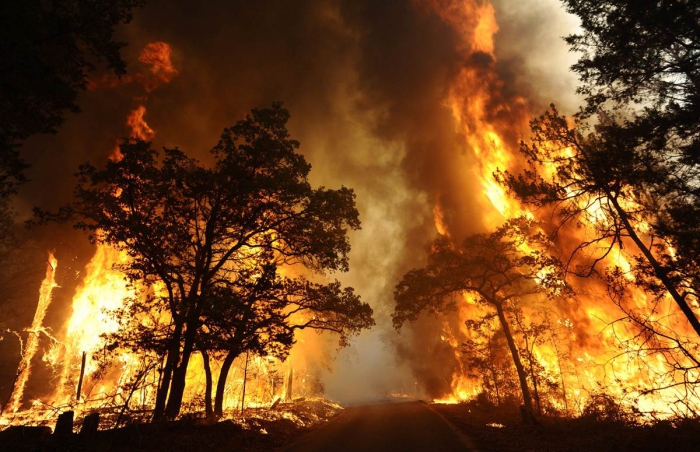
Depending on which elements of the forest are spreading fire, all fires are divided into several types:
- Grassroots. Most often they happen when the fire spreads over the subsoil cover, cover the lower parts of tree trunks and roots protruding to the surface. Ground fires are quick and steady. The former lead to the destruction of living and dead soil cover, self-seeding of forests, fallen leaves, burning of the bark of the lower part of trees. Such a fire is dangerous in that it spreads rapidly. If the ignition is steady, then the litter will burn out, the roots will burn, the undergrowth and undergrowth will completely burn out.
- Horse fires. They are also stable and fluent. The highest damage is caused by riding fires when the crowns of trees on the upper tier burn. They occur mainly in the summer.
How to stew?
Classification of fires allows you to choose the best technology for extinguishing them.There are several fire fighting methods:
- Green branches, brooms or burlap sweep the edges of the bottom fires to sweep the burning particles back to the side of the fire.
- The edge of the fire is filled with soil to bring down the flame, to limit air access to them.
- Protective mineralized strips, ditches are laid, which allows you to stop the edge of the fire.
- Explosive extinguishing: this creates barrage ditches, trenches that limit the spread of fire.
- Water use.
- Use of extinguishing chemicals. They cool combustible materials, restrict access to oxygen.
- Extinguishing by seaplane.
Forest Fire Prevention
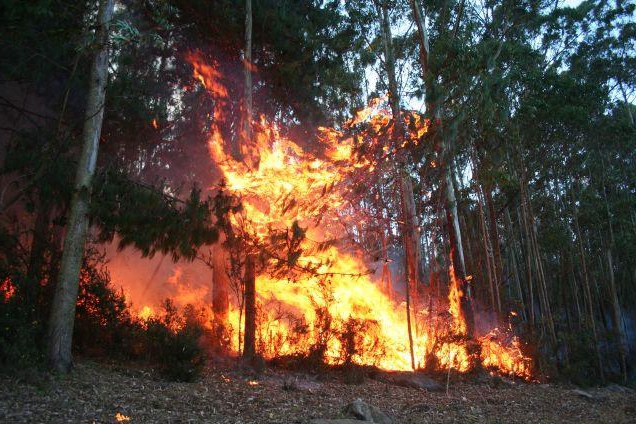
The classification of natural fires is extensive, so a specific technology is used for a specific type of fire. To avoid the occurrence of fire in the forest, systematic preventive work should be carried out. To do this, clears, mineralized strips, chemical stations, observation masts are created in advance. The use of various techniques plays a large role - so you can put out a fire much faster. You must also be able to evacuate people and animals from fire hazardous areas in a timely manner.
Peat fires
Due to the constant effect on the peat of temperature, humidity, biological characteristics of plants, it gradually decomposes. The higher the degree of decomposition, the greater the likelihood of a fire hazard. Even a small wind speed is sufficient for burning peat particles to be scattered over the surface of the earth over long distances. It is the sparks that fall on the dried peat that set it on fire and thereby form new fires.
The classification of peat fires depends on how fast the wind is spreading. There are 3 fronts of a peat fire:
- head: moves in the direction of the wind at high speed;
- lateral (flanking): moves from the leading front to the sides at low speed;
- back: moves towards the wind with the smallest speed.
Peat fire development stages
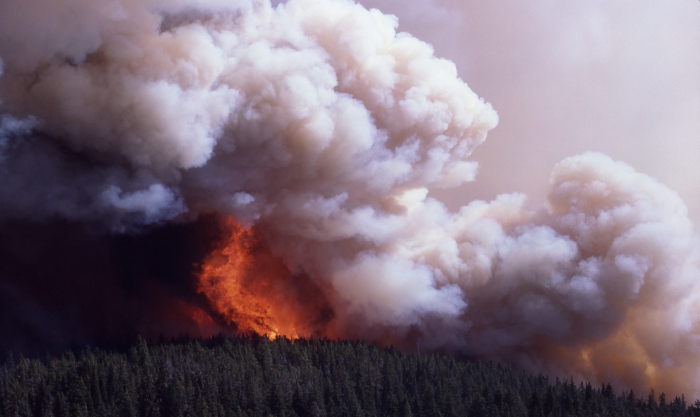
Peat fires develop at different times of the day, depending on meteorological factors. First, peat lights up: a small fire is formed, which develops slowly and slightly smoky. The ignition period can take several minutes or several hours - it all depends on the humidity of peat, wind speed, temperature and humidity.
The second stage of development is characterized by the intensity of combustion, when its speed and temperature increase. The fire area becomes larger very quickly, with smoke spreading over large areas. The intense spread of fire occurs in the third period - during this time the fire covers an even larger volume of surfaces, burning and smoke become strong. Debris from fallen trees appears in the fires, which can become dangerous for people and equipment.
How to stew?
Underground peat fires appear already after the grassroots, so it is first necessary to extinguish the grassroots fires first. For this, chemical solutions, “wet” water, which is fed into the peat layer by special watering machines, are used. Localization of underground fires is also carried out by creating ditches depth to the level of groundwater. The external slope of the ditches is filled with mineral soil, while it is advisable to fill the trenches themselves with water.
Peat combustion usually occurs in smoldering mode, that is, there is no flame, but due to the ingress of oxygen and air, combustion is maintained. Moreover, in the lower part, combustion is intense due to the fact that heavier cold air reacts with burning peat. Fire classification divides peat fires into single-focal and multi-focal. To extinguish the hearth, you need to spill it with water, separate it from the edges of the formed funnel.If there are many foci, then they can be extinguished only by localization of the entire area by creating deep ditches.
As a result of peat combustion, products of complete and incomplete oxidation of peat in the form of methane, hydrogen, soot, and smoke appear. Accordingly, the state of the environmental situation will be worse. And, therefore, there will be a danger of respiratory system disease in children and adults with allergic diseases.
findings
Fire is a real natural disaster, especially when it comes to its natural varieties. But in fact, most of the causes for fire can be prevented if the fire is handled correctly, because we have the greatest harm from the fire because of our irresponsibility.








